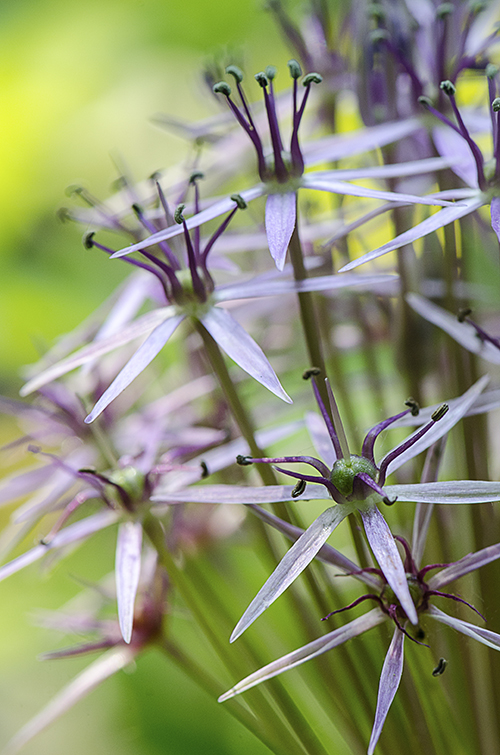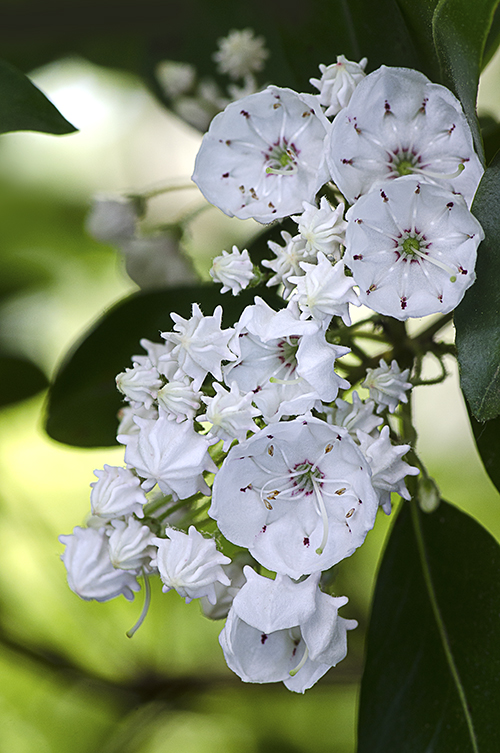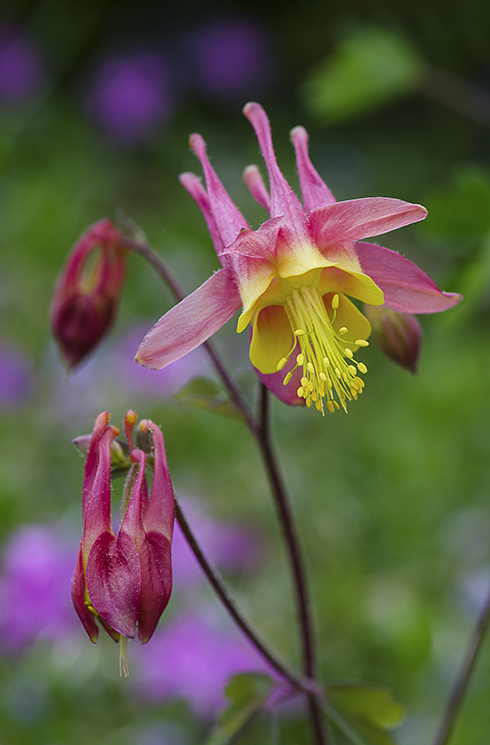© Cindy Dyer. All rights reserved.
In the studio: Jeff and Angela
27 05 2013Comments : Leave a Comment »
Tags: Lastolite Hilite background, Nikon, portrait photography, strobe lighting, studio lighting, Westcott Spiderlite TD5 holiday kit
Categories : Photography, portraits
In the studio: Jeff, Angela and Annabella
27 05 2013Comments : 1 Comment »
Tags: Lastolite Hilite background, Nikon, portrait photography, strobes, studio photography
Categories : Photography, portraits
In the studio: Angela and Annabella
27 05 2013I photographed my friend Jeff, his girlfriend Angela, and her daughter Annabella this morning in my studio and outdoors. For the studio shots, I used my Westcott Spiderlites as well as two strobes with the Lastolite Hilite background. I’ll have more images to show later but wanted to share a few sneak previews.
© Cindy Dyer. All rights reserved.
Comments : Leave a Comment »
Tags: Lastolite Hilite background, Nikon, portrait photography, studio lighting, Westcott Spiderlite TD5 holiday kit
Categories : family, Photography, portraits
Valerian?
27 05 2013I think this might be a type of Valerian, but I’m not 100% sure…would love help with identification on this one!
© Cindy Dyer. All rights reserved
Comments : Leave a Comment »
Tags: flower, garden, garden photography, gardening, Green Spring Gardens, macro photography, Nikkor 105mm micro, Nikon D7000, plant
Categories : Flowers, gardening, Photography
Opium poppy
26 05 2013Opium poppy (Papaver somniferum), photographed at Green Spring Gardens
© Cindy Dyer. All rights reserved.
Comments : 2 Comments »
Tags: flower, garden, garden photography, gardening, Green Spring Gardens, macro photography, Nikkor 105mm micro, Nikon D7000, Opium Poppy, Papaver somniferum, plant
Categories : Flowers, gardening, Photography
Chives and Columbines
26 05 2013A bed of chives (Allium schoenoprasum) against a backdrop of Columbine (Aquilegia) blooms in the rock garden at Green Spring Gardens
© Cindy Dyer. All rights reserved.
Comments : 1 Comment »
Tags: Allium schoenoprasum, Aquilegia, bloom, Chives, columbine, flower, garden, garden photography, gardening, Green Spring Gardens, macro photography, Nikon D7000
Categories : Flowers, gardening, Photography
Blooming in my garden: Allium schubertii
25 05 2013Comments : Leave a Comment »
Tags: allium, Allium schubertii, bloom, flower, garden, garden photography, gardening, macro photography, Nikkor 105mm micro, Nikon D7000, Perennial, plant
Categories : Flowers, gardening, Photography
Blooming in my garden: Bearded iris
25 05 2013Comments : Leave a Comment »
Tags: bearded iris, bloom, bulb, flower, garden, garden photography, gardening, Iris germanica, macro photography, Nikkor 105mm micro, Nikon D7000
Categories : Flowers, gardening, Photography
Star-of-Bethlehem
25 05 2013Comments : Leave a Comment »
Tags: bloom, flower, garden, garden photography, gardening, macro photography, Nikkor 105mm micro, Nikon D7000, Ornithogalum umbellatum, Star of Bethlehem
Categories : Flowers, gardening, Photography
On Assignment: Kitchen remodel by Cross Construction
23 05 2013Comments : 1 Comment »
Tags: architecture, Cross Construction, home design, home remodeling, interior design, kitchen remodel, Nikon, photography
Categories : Interior Design, Photography
Get out the Kleenex for this one…well worth the tears to watch
23 05 2013Comments : Leave a Comment »
Categories : Photography
On Assignment: Bathroom remodel by Cross Construction
23 05 2013Comments : 1 Comment »
Tags: architecture, bathroom remodel, Cross Construction, HOME, interior design, Nikon D7000, photography, remodeling, San Antonio
Categories : HOME, Interior Design, Photography
On Assignment: Kitchen remodel by Cross Construction
23 05 2013Cross Construction, in San Antonio, Texas, remodeled this sleek and modern kitchen, which is completely different from the previous kitchen I blogged about.
© Cindy Dyer. All rights reserved.
Comments : 1 Comment »
Tags: architecture, Cross Construction, HOME, interior design, kitchen remodeling, Nikon D7000, photography, remodeling, San Antonio
Categories : Cooking, Creativity, Furniture, HOME, Interior Design, Photography
Bearded iris, unknown variety
23 05 2013Bearded iris (Iris germanica), photographed at Green Spring Gardens. The parking lot was my background (and I couldn’t have that!), so I improvised by using my white tri-grip diffuser as a background. Voila!
© Cindy Dyer. All rights reserved.
Comments : 2 Comments »
Tags: bearded iris, bloom, flower, garden, garden photography, gardening, Green Spring Gardens, Iris germanica, macro photography, Nikkor 105mm micro, Nikon D7000, tri-grip diffuser
Categories : Flowers, gardening, Photography
Star of Persia (Allium christophe)
23 05 2013While I’ve photographed this intriguing plant before, I’ve never had the opportunity to shoot it from ground level. All my images have been shot overhead. This bloom was a tiny wayward volunteer in Carolyn’s garden, growing in between stepping stones. Being able to shoot from this low vantage point provided some interesting images. The stamens look like little crowns in this shot. The afternoon light was dappled and provided a beautiful glow behind everything.
© Cindy Dyer. All rights reserved.
Comments : Leave a Comment »
Tags: Allium christophe, bloom, bokeh, flower, garden, gardening, Nikkor 105mm micro, Nikon D7000, Perennial, plant, Star of Persia
Categories : Flowers, gardening, Photography
Mountain Laurel
22 05 2013Mountain Laurel (Kalmia latifolia), blooming in my friend Carolyn’s garden in Annandale, Virginia. I’ve heard of this evergreen shrub, and I assumed it would bloom, but this is the first time I’ve actually seen the blooms. They are spectacular! Little umbrella-like buds open to about 1/2″ in diameter with inverted “spokes” that appear to loosen to become the stamens. In this shot you can see all the stages of these pretty little flowers. The buds remind me of those little chocolate stars we used to buy at Sears when they had a candy section (you know, in covered wagon days).
© Cindy Dyer. All rights reserved.
Comments : 1 Comment »
Tags: evergreen shrub, flower, garden, garden photography, gardening, Kalmia latifolia, macro photography, Mountain laurel, Nikkor 105mm micro, Nikon D7000, plant
Categories : Flowers, gardening, Photography
Seen & Heard: Teri Wathen
21 05 2013Teri Wathen is our Seen & Heard profile in the May/June 2013 issue of Hearing Loss Magazine, published bimonthly by the Hearing Loss Association of America. I met and photographed Teri at HLAA’s Convention 2012 in Providence, Rhode Island.
Photo © Cindy Dyer. All rights reserved.
TERI WATHEN
Richmond, TX / Born April 2 (not quite a fool) in Houston, TX
MY HEARING LOSS… I was born with a mild hearing loss and got my first hearing aid at age 12. My hearing loss progressively grew worse as I aged (I aged?). I am now a bilateral cochlear implant user and love them.
SAGE ADVICE FOR SOMEONE NEWLY-DIAGNOSED WITH HEARING LOSS…Get hearing aids as quickly as possible. They are not a cure-all, but they sure do help. Find other people with hearing loss and ask a lot of questions. Your local HLAA Chapter is a good place to start. Educate yourself. Do not bluff.
MY FUNNY HEARING LOSS MOMENT… While walking down the street with a friend, looking at her in order to read her lips, I ran into a light pole. This really happened!
WHEN I GREW UP, I WANTED TO BE… an airline stewardess. I don’t think they call them that anymore, though.
FIRST THING I BOUGHT WITH MY OWN MONEY WAS… my first car, a 1967 red and white Ford Mustang convertible. My sons wish I still had that car. “It’s worth at least $40 – $50,000 now, mom!”
HARDEST THING I’VE EVER DONE… I was a business teacher and taught typing, shorthand, business law and accounting. When computers first came out, I had to teach programming. I had never taken that course, had never programmed anything, and had no idea how to teach it. Some of my students knew more than I did. It was agonizing and embarrassing!
I LOVE THE SOUND OF… I never thought I’d say this, but I love the sound of trains. We just moved into a new subdivision that has a train close by. We hear the train horns all times of the day and night (except when my processors are off). Now when I hear trains, it reminds me of “home.”
IN MY SPARE TIME, I… love to play Sudoku, the Jumble, crossword puzzles, and Spider Solitaire on the computer.
I MISS… my friend, Karen, who passed away way too young.
WHO HAS HAD THE MOST INFLUENCE ON YOUR LIFE? My husband, Ray. He is kind, talented, humorous, loves to play with words (puns), a poet, and a great husband, father, and grandfather. We just celebrated our 40th anniversary by renewing our wedding vows.
MY KIDS HAVE TAUGHT ME… Both of my sons have hearing loss. My younger son has two sons and they also have hearing loss. All of them have inspired me to advocate for others with hearing loss.
PEOPLE WOULD BE SURPRISED THAT I… have a black belt in Karate.
WORKING NINE TO FIVE… When I was a teenager, I gift wrapped in my mother’s dress shop. In college, I worked as a secretary for my aunt and uncle’s advertising agency. I was a teacher for 32 years. I have been a hearing loss resource specialist for the past 10 years. (That’s only four jobs in the last 50 years!)
I AM… passionate, tall, laid back, forgetful, and very sensitive. (I cry at the drop of a hat.)
WHAT’S THE BEST THING SINCE SLICED BREAD? My iPhone. I love that I can text, e-mail, talk, and play games all in the palm of my hand.
MY GREAT ACCOMPLISHMENTS… getting my master’s degree, getting my black belt, having two wonderful sons, and being married to Ray
for 40 years!
I WANT TO BE REMEMBERED… as someone who had a passion to help people with hearing loss.
Hearing Loss Magazine is great! I love reading about new technology and inventions that can help those of us with hearing loss. I love reading about others and what they have accomplished.
Comments : Leave a Comment »
Tags: cochlear implant, Hearing Loss Association of America, Hearing Loss Magazine, HLAA, HLAA Convention 2012, Nikon D300, portrait photography, Seen & Heard, Teri Wathen
Categories : hearing loss, Photography
Hearing Loss Magazine, May/June 2013 issue
21 05 2013The Bozzone family graces the cover of the May/June 2013 issue of Hearing Loss Magazine, which is published bimonthly by the Hearing Loss Association of America (HLAA). Jason and his wife, Melissa, have three children. Their youngest child, Madeline, has a hearing loss. In this issue of the magazine, Melissa writes about Madeline in “Our Party of Five: Madeline’s Story.” Julie Fisher, the Walk4Hearing Program Assistant, interviewed Jason for this issue as well. I photographed the Bozzone family at a Pennsylvania Walk4Hearing event last fall.
© Cindy Dyer. All rights reserved.
Also in this issue:
National Sponsors Create Awareness for Walk4Hearing
2013 sponsor Noreen Gibbens explains why she supports the Walk4Hearing.
The Countdown is On
Nancy Macklin builds excitement for Convention 2013 in Portland, Oregon.
Closed Captioning Frustrations—How to Get Some Help
Carol Studenmund explains how consumers can help improve the quality of captioning on TV.
Can You Hear Me Now? Maximizing Your Hearing on the Phone
Audiologist Brad Ingrao offers technical tips and communications strategies for using the phone.
Seen & Heard
HLAA member Teri Wathen is this issue’s profile.
Advocacy, One Person at a Time
Lise Hamlin, HLAA’s Director of Public Policy, outlines how the organization advocates for public policy and federal regulations, as well as for the rights on more personal levels
Hooked on Bionics
May is Better Hearing and Speech Month and in honor of the event, world-renowned puzzle creator George Barany creates a doozie for our readers.
Hearing Loss: My Secondary Disability
Osteogensis Imperfecta is a rare genetic condition. Adding hearing loss to that could mean a lot of frustration and insurmountable challenges, but, not for author Rosemarie Kasper.
New in Print: Shouting Won’t Help: Why I—and 50 Million Other Americans—Can’t Hear You
Janet McKenna reviewed Katherine Bouton’s new book.
Comments : 1 Comment »
Tags: cochlear implant, graphic design, hearing aid, hearing loss, Hearing Loss Magazine, HLAA, Nikon D300, photography, portrait photography, Walk4Hearing
Categories : children, family, hearing loss, Photography
Foxglove
20 05 2013Foxglove (Digitalis), photographed at Green Spring Gardens
© Cindy Dyer. All rights reserved.
I was aware that Foxglove is highly poisonous, but wanted to do some further research. I found a fascinating reference to Van Gogh’s paintings and his possible use of digitalis therapy during his “yellow period.” Here’s what I found on wikipedia on the subject:
The entire plant is toxic (including the roots and seeds). Mortality is rare, but case reports do exist. Most plant exposures occur in children younger than six years and are usually unintentional and without associated significant toxicity. More serious toxicity occurs with intentional ingestions by adolescents and adults. Early symptoms of ingestion include nausea, vomiting, diarrhoea, abdominal pain, wild hallucinations, delirium, and severe headache. Depending on the severity of the toxicosis, the victim may later suffer irregular and slow pulse, tremors, various cerebral disturbances, especially of a visual nature (unusual colour visions (see xanthopsia) with objects appearing yellowish to green, and blue halos around lights), convulsions, and deadly disturbances of the heart. Vincent van Gogh‘s “Yellow Period” may have been influenced by digitalis therapy which, at the time, was thought to control seizures. As noted above, other oculotoxic effects of digitalis include generalized blurry vision, as well as seeing a “halo” around each point of light. The latter effect can be seen in van Gogh’s Starry Night. Van Gogh’s digitalis use is strongly suggested by multiple self portraits that include the foxglove plant.
_____________
SIDEBAR: I initially majored in fine art (painting) in college before switching to graphic design. I don’t regret that decision as my education and experience has afforded me a fulfilling career in design. Through the years, when I have attempted to return to painting, I have found it difficult to get traction and to find my “style.” I prefer painting loose and sketchy, using lots of paint. I also don’t want to copy work as I did when I was learning to paint all those years ago. As a photographer who continually strives for sharp focus in my images, it can be hard to loosen up when I return to the canvas. Despite this struggle, I don’t think I’ll be partaking of foxglove as Van Gogh did!
Earlier this year, I wrote about what I call “the painting years.” You can read those postings below:
https://cindydyer.wordpress.com/2011/12/29/the-painting-years-first-florals/
https://cindydyer.wordpress.com/2011/12/31/the-painting-years-texas-bluebonnets/
https://cindydyer.wordpress.com/2011/12/30/the-painting-years-apple-harvest/
https://cindydyer.wordpress.com/2011/12/30/the-painting-years-landscape-with-deer/
Comments : 1 Comment »
Tags: flower, Foxglove, garden, gardening, Green Spring Gardens, herbaceous perennial, macro photography, Nikkor 105mm micro, Nikon D7000, Van Gogh
Categories : Flowers, gardening, Photography
Clematis
20 05 2013I photographed this unusual Clematis (Klematis sp.) at Green Spring Gardens this afternoon. I have no idea what variety it is, but it was unusual in that the stamens spread out of most of the bloom, rather than being smaller and centrally located.
© Cindy Dyer. All rights reserved.
Comments : 1 Comment »
Tags: clematis, flower, garden, garden photography, gardening, Green Spring Gardens, Klematis sp., macro photography, Nikkor 105mm micro, Nikon D7000, Perennial, vine
Categories : Flowers, gardening, Photography
Blue Pearls Wild Indigo
20 05 2013Blue Pearls Wild Indigo (Baptisia australis var. minor ‘Blue Pearls’ (B. minor); variety is native to Kentucky and the central U.S.; photographed at Green Spring Gardens
© Cindy Dyer. All rights reserved
Comments : Leave a Comment »
Tags: Baptisia australis, Blue Pearls Wild Indigo, flower, garden, garden photography, gardening, Green Spring Gardens, macro photography, Nikkor 105mm micro, Nikon D7000, Perennial, plant
Categories : Flowers, gardening, Photography
Lotsa love (in-a-mist)
20 05 2013Love-in-a-mist (Nigella damascena), photographed at Green Spring Gardens
© Cindy Dyer. All rights reserved.
Comments : 2 Comments »
Tags: annual plant, bloom, flower, garden, garden photography, gardening, Green Spring Gardens, love-in-a-mist, macro photography, Nigella damascena, Nikkor 105mm micro, Nikon D7000
Categories : Flowers, gardening, Photography
Bearded iris ‘Megabucks’
20 05 2013Bearded iris ‘Megabucks’ (Iris germanica ‘Megabucks’), photographed at Green Spring Gardens
© Cindy Dyer. All rights reserved
Comments : 1 Comment »
Tags: flower, garden, garden photography, gardening, Green Spring Gardens, iris, Iris germanica 'Megabucks', macro photography, Nikkor 105mm micro, Nikon D7000, Perennial
Categories : Flowers, gardening, Photography
Yellow Columbine blooms
19 05 2013Columbine blooms (Aquilegia sp.), photographed against small evergreen trees in the rock garden at Green Spring Gardens
© Cindy Dyer. All rights reserved.
Comments : Leave a Comment »
Tags: Aquilegia sp., bloom, columbine, garden, garden photography, gardening, Green Spring Gardens, macro photography, Nikkor 105mm micro, Nikon D7000, Perennial, plant, rock garden
Categories : Flowers, gardening, Photography
Bleeding Hearts bloom
19 05 2013Bleeding Hearts (Lamprocapnos spectabilis; formerly Dicentra spectabilis); photographed at Green Spring Gardens
© Cindy Dyer. All rights reserved.
Comments : 1 Comment »
Tags: bleeding hearts, Dicentra spectablis, flower, garden, garden photography, gardening, Green Spring Gardens, Lamprocapnos spectabilis, macro photography, Nikkor 105mm micro, Nikon D7000, Perennial
Categories : Flowers, gardening, Photography
Blooming in my garden today: Bearded iris ‘Poem of Ecstasy’
15 05 2013Bearded iris ‘Poem of Ecstasy’ (Iris germanica). How’s that for a flower name?!
© Cindy Dyer. All rights reserved.
Comments : 3 Comments »
Tags: Bearded iris 'Poem of Ecstasy', bloom, flower, garden, garden photography, gardening, Iris germanica, macro photography, Nikkor 105mm micro, Nikon D7000, Perennial
Categories : Flowers, gardening, Photography
Stonecrop sedum ‘Weihenstephaner Gold’
15 05 2013Stonecrop sedum floriferum ‘Weihenstephaner Gold’, photographed in the rock garden at Green Spring Gardens
© Cindy Dyer. All rights reserved.
Comments : Leave a Comment »
Tags: flower, garden, garden photography, gardening, Green Spring Gardens, macro photography, Nikkor 105mm micro, Nikon D7000, rock garden, Stonecrop sedum floriferum 'Weihenstephaner Gold’
Categories : Flowers, gardening, Photography
Columbine blooms
15 05 2013Columbine blooms (Aquilegia sp.), photographed in the rock garden at Green Spring Gardens
© Cindy Dyer. All rights reserved.
Comments : Leave a Comment »
Tags: Aquilegia, columbine, flower, garden, garden photography, gardening, Green Spring Gardens, macro photography, Nikkor 105mm micro, Nikon D7000, Perennial, rock garden
Categories : Flowers, gardening, Photography





























GIVE ‘EM SOMETHING TO TALK ABOUT